The automotive landscape is rapidly evolving, with electric vehicles leading the charge towards a cleaner, more sustainable future. Among the emerging contenders in the electric SUV segment, the Polestar 4 and the BYD Sealion 7 stand out. Both vehicles promise impressive performance and innovative technologies. However, which one deserves your attention? Here’s a comprehensive comparison of these two rivals.
Polestar 4 vs BYD Sealion 7 – Which model is better for everyday use?
Everyday use, family trips or long-distance drives – here’s where the differences show.
Discover whether Polestar 4 or BYD Sealion 7 fits your lifestyle better.
Design and Dimensions
The Polestar 4 exudes a sleek and modern aesthetic, characteristic of the Swedish brand's design philosophy. With a length of 4840 mm, a width of 2008 mm, and a height of 1534 mm, it projects a sporty presence. In contrast, the BYD Sealion 7 has dimensions of 4830 mm in length, 1925 mm in width, and stands taller at 1620 mm. The Sealion 7's design leans towards a more rugged SUV silhouette, appealing to those looking for a versatile family vehicle.
Power and Performance
When it comes to power, the Polestar 4 offers two variants, topping out at a remarkable 544 HP with a torque of 686 Nm. Its acceleration from 0-100 km/h is achieved in just 3.8 seconds, indicating a robust performance suite that caters to driving enthusiasts. On the other hand, the BYD Sealion 7 has a powerful top variant that reaches 530 HP and a torque of 690 Nm, allowing for a competitive 0-100 km/h acceleration time of 4.5 seconds. Although the Sealion has slightly greater maximum speed at 215 km/h compared to the Polestar’s 200 km/h, the latter’s all-wheel drive system provides enhanced stability and control.
Electric Range and Efficiency
On the efficiency front, the Polestar 4 leads with an electric range of 590 km, closely shadowed by the BYD Sealion 7 that offers a commendable maximum of 502 km. The energy consumption figures also highlight Polestar's edge; it consumes approximately 18.7 kWh/100 km compared to the Sealion 7's highest consumption figure of 21.9 kWh/100 km. This makes the Polestar 4 not just a more efficient option but also a solid choice for longer journeys.
Battery and Charging
The Polestar 4 is equipped with a 94 kWh battery, providing ample range for daily use and long trips alike. It’s designed for quick charging capabilities, enhancing its usability. Meanwhile, BYD's Sealion 7, with its various configurations, includes options for a robust battery setup capable of lasting journeys, although specific capacity details vary depending on the model variant chosen.
Interior and Technology
Inside, the Polestar 4 hosts a luxurious cabin that accommodates up to five passengers. It features high-quality materials, a modern infotainment system, and advanced driver-assistance technologies. The BYD Sealion 7, also seating five, boasts ample space and a feature-rich interior designed to provide comfort alongside practicality, with various tech options tailored to different consumer needs.
Practicality and Cargo Space
In terms of practicality, the Polestar 4 offers a trunk capacity of 526 liters, making it a great option for those who frequently haul gear or luggage. The BYD Sealion 7 is slightly ahead, featuring a cargo capacity of 520 liters, which is beneficial for families or those who need extra space for travel and leisure activities.
Conclusion: Which One Should You Choose?
The Polestar 4 excels with its superior efficiency, stunning performance, and minimalist design. It is an ideal choice for those looking for a sporty electric SUV that performs well in both urban and highway driving. Conversely, the BYD Sealion 7 is strategically positioned for buyers seeking a robust electric family SUV with a spacious interior and rugged appeal.
Ultimately, the right choice will depend on your specific needs, preferences, and lifestyle. Whether you lean toward Polestar's electric dynamism or BYD's family-friendly approach, both SUVs represent significant advancements in electric vehicle technology and design.
Here’s where it gets real: The technical differences in detail
Costs and Efficiency:
Looking at overall running costs, both models reveal some interesting differences in everyday economy.
BYD Sealion 7 has a clearly perceptible advantage in terms of price – it starts at 42800 £, while the Polestar 4 costs 53100 £. That’s a price difference of around 10209 £.
In terms of energy consumption, the advantage goes to the Polestar 4: with 17.80 kWh per 100 km, it’s a bit more efficient than the BYD Sealion 7 with 19.90 kWh. That’s a difference of about 2.10 kWh.
As for range, the Polestar 4 performs somewhat better – achieving up to 620 km, about 118 km more than the BYD Sealion 7.
Engine and Performance:
Power, torque and acceleration say a lot about how a car feels on the road. This is where you see which model delivers more driving dynamics.
When it comes to engine power, the Polestar 4 has a slight edge – offering 544 HP compared to 530 HP. That’s roughly 14 HP more horsepower.
In acceleration from 0 to 100 km/h, the Polestar 4 is to a small extent quicker – completing the sprint in 3.80 s, while the BYD Sealion 7 takes 4.50 s. That’s about 0.70 s faster.
In terms of top speed, the BYD Sealion 7 performs barely noticeable better – reaching 215 km/h, while the Polestar 4 tops out at 200 km/h. The difference is around 15 km/h.
There’s also a difference in torque: BYD Sealion 7 pulls minimal stronger with 690 Nm compared to 686 Nm. That’s about 4 Nm difference.
Space and Everyday Use:
Beyond pure performance, interior space and usability matter most in daily life. This is where you see which car is more practical and versatile.
Both vehicles offer seating for 5 people.
In curb weight, BYD Sealion 7 is hardly perceptible lighter – 2225 kg compared to 2230 kg. The difference is around 5 kg.
In terms of boot space, the Polestar 4 offers barely noticeable more room – 526 L compared to 520 L. That’s a difference of about 6 L.
In maximum load capacity, the BYD Sealion 7 performs somewhat better – up to 1789 L, which is about 253 L more than the Polestar 4.
When it comes to payload, Polestar 4 minimal takes the win – 455 kg compared to 410 kg. That’s a difference of about 45 kg.
Who wins the race?
The Polestar 4 proves to be won narrowly and therefore becomes our DriveDuel Champion!
Polestar 4 is the better all-rounder in this comparison.
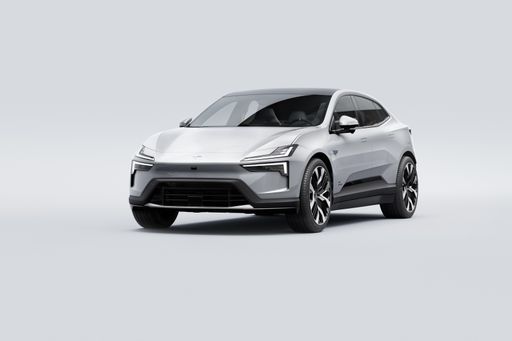 @ Polestar Automotive Holding
@ Polestar Automotive Holding
Polestar 4
Polestar 4
The Polestar 4 embodies a seamless blend of cutting-edge technology and sophisticated design, establishing itself as a prominent contender in the modern electric vehicle market. Its elegant exterior lines are complemented by an interior that prioritises both luxury and sustainability, offering a serene driving experience. With its focus on innovation, the Polestar 4 continues to push the boundaries of performance, setting a new standard for what an electric car can achieve.
details @ Polestar Automotive Holding
@ Polestar Automotive Holding
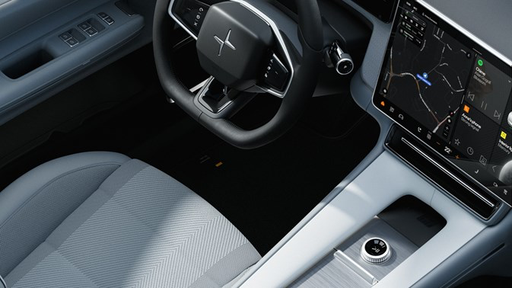 @ Polestar Automotive Holding
@ Polestar Automotive Holding
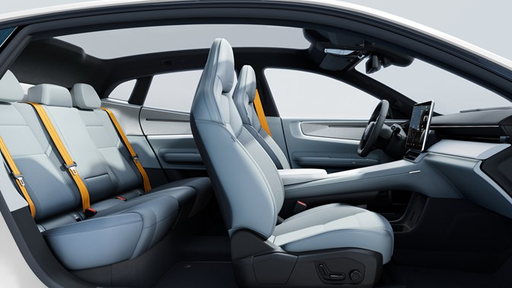 @ Polestar Automotive Holding
@ Polestar Automotive Holding
BYD Sealion 7
The Sealion 7 captivates with its striking design and impressive performance that appeals to both enthusiasts and casual drivers alike. With a focus on comfort and advanced technology, this model redefines the driving experience, making every journey enjoyable. Its sleek silhouette coupled with an innovative interior showcases the perfect blend of style and functionality.
details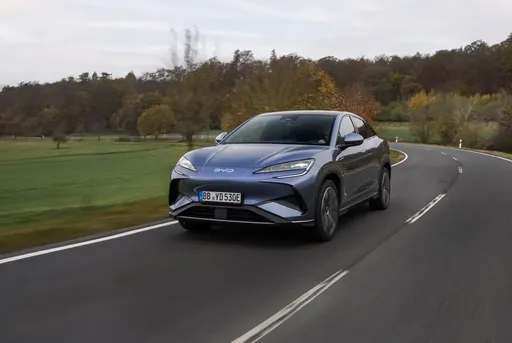 @ BYD Auto / BYD Global Media
@ BYD Auto / BYD Global Media
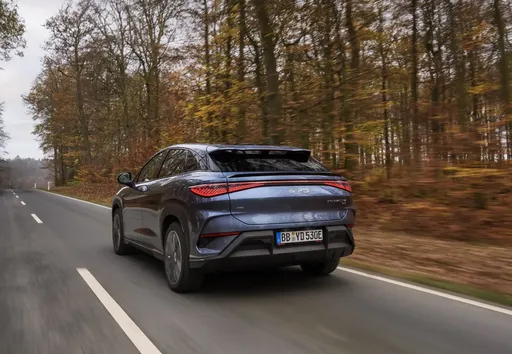 @ BYD Auto / BYD Global Media
@ BYD Auto / BYD Global Media
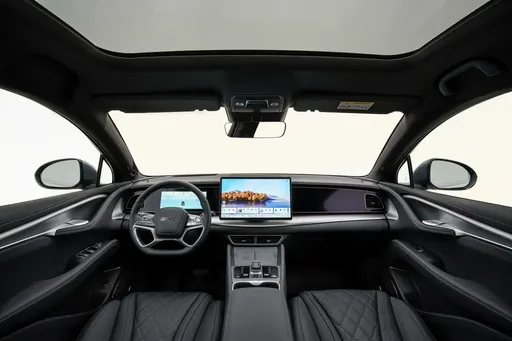 @ BYD Auto / BYD Global Media
@ BYD Auto / BYD Global Media
 @ Polestar Automotive Holding
@ Polestar Automotive Holding
|
 @ BYD Auto / BYD Global Media
@ BYD Auto / BYD Global Media
|
|
|
|
Costs and Consumption |
|
|---|---|
|
Price
53100 - 59900 £
|
Price
42800 - 52300 £
|
|
Consumption L/100km
-
|
Consumption L/100km
-
|
|
Consumption kWh/100km
17.8 - 18.7 kWh
|
Consumption kWh/100km
19.9 - 21.9 kWh
|
|
Electric Range
590 - 620 km
|
Electric Range
456 - 502 km
|
|
Battery Capacity
94 kWh
|
Battery Capacity
-
|
|
co2
0 g/km
|
co2
0 g/km
|
|
Fuel tank capacity
-
|
Fuel tank capacity
-
|
Dimensions and Body |
|
|---|---|
|
Body Type
SUV
|
Body Type
SUV
|
|
Seats
5
|
Seats
5
|
|
Doors
5
|
Doors
4
|
|
Curb weight
2230 - 2355 kg
|
Curb weight
2225 - 2435 kg
|
|
Trunk capacity
526 L
|
Trunk capacity
520 L
|
|
Length
4840 mm
|
Length
4830 mm
|
|
Width
2008 mm
|
Width
1925 mm
|
|
Height
1534 mm
|
Height
1620 mm
|
|
Max trunk capacity
1536 L
|
Max trunk capacity
1789 L
|
|
Payload
455 kg
|
Payload
410 kg
|
Engine and Performance |
|
|---|---|
|
Engine Type
Electric
|
Engine Type
Electric
|
|
Transmission
Automatic
|
Transmission
Automatic
|
|
Transmission Detail
Reduction Gearbox
|
Transmission Detail
Reduction Gearbox
|
|
Drive Type
All-Wheel Drive, Rear-Wheel Drive
|
Drive Type
Rear-Wheel Drive, All-Wheel Drive
|
|
Power HP
272 - 544 HP
|
Power HP
313 - 530 HP
|
|
Acceleration 0-100km/h
3.8 - 7.1 s
|
Acceleration 0-100km/h
4.5 - 6.7 s
|
|
Max Speed
200 km/h
|
Max Speed
215 km/h
|
|
Torque
343 - 686 Nm
|
Torque
380 - 690 Nm
|
|
Number of Cylinders
-
|
Number of Cylinders
-
|
|
Power kW
200 - 400 kW
|
Power kW
230 - 390 kW
|
|
Engine capacity
-
|
Engine capacity
-
|
General |
|
|---|---|
|
Model Year
2024
|
Model Year
2024
|
|
CO2 Efficiency Class
A
|
CO2 Efficiency Class
A
|
|
Brand
Polestar
|
Brand
BYD
|
Is the Polestar 4 offered with different drivetrains?
The Polestar 4 is offered with All-Wheel Drive or Rear-Wheel Drive.
The prices and data displayed are estimates based on German list prices and may vary by country. This information is not legally binding.
